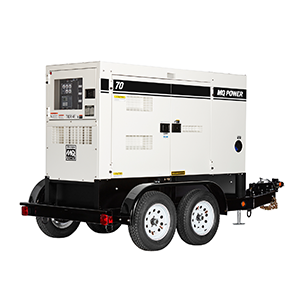4 Phases of Emergency Preparedness
The four phases of emergency preparedness, also known as the preparedness cycle, are stages for preparing for, responding to and recovering from emergency situations. They provide guidelines that both businesses and homeowners can use to ensure that they are ready for an emergency situation should disaster strike.
The Preparedness Cycle
The four stages we are going to discuss are mitigation, preparedness, response and recovery.
Because these phases operate in a cycle, once recovery has occurred, mitigation will need to begin once again. Let’s take a closer look at each of the four stages.
1. Mitigation
It’s said that an ounce of prevention is worth a pound of cure, and this remains true when considering emergency preparedness. Mitigation is the work done to prevent or reduce the cause, impact and consequences of disaster.
This includes things like tying down your home or sheds or in a way to withstand strong wind damage and constructing barriers to flooding.
Mitigation:
- Can help to prevent future emergencies
- Can reduce the impacts of an emergency
2. Preparedness
Preparedness is a continuous process and can happen in conjunction with any stage of the cycle. Some examples are activities like staff training, risk assessment and developing a plan for different types of disasters.
Preparedness helps ensure that, should disaster strike, you are ready to tackle all ensuing challenges and that you have the knowledge and equipment to do so.
Preparedness:
- Includes all planning for emergencies
- Includes stockpiling supplies, like food and secondary power sources
- Needs to happen before an emergency happens
3. Response
How you respond to an emergency situation depends on a variety of factors, including your preparedness. Following the emergency there may be impacts to the supply chain or delivery of goods and services, and other organizations may be put in place to specifically handle the fallout.
Each business and household needs to know how they will respond to a disaster before it occurs. Action needs to be taken quickly and focus on the safety of members of the business or household. Abstaining from panic is crucial to an effective response.
Response:
- Includes responding to an emergency in a safe and timely manner
- Includes actions taken to prevent further loss of life and property
- Is when your preparedness plans come into effect
- Should NOT include panicking
4. Recovery
After disaster has struck and a response has been initiated, it is time to try to return to a place of normalcy. This will look different in every situation. Businesses need to get back to work as quickly as possible, and homes need to find a sense of stability.
Recovery:
- Is the actions required in order to return to normal
- Includes financial assistance to help repairs to progress
- Recovery happens in the days, weeks and months after an emergency
Allied Rental Wants You to Be Prepared
Having a generator can make a crucial difference in your response to an emergency, whether you are a business owner that needs to keep operating and producing revenue or a member of a household that needs to keep the lights on after a natural disaster.
Allied Rental Company has a wide selection of diesel-fueled generators for rent by the day, week and month. Check us out online or give us a call anytime.

